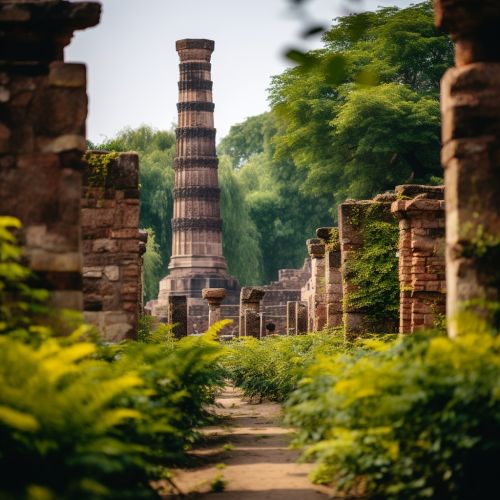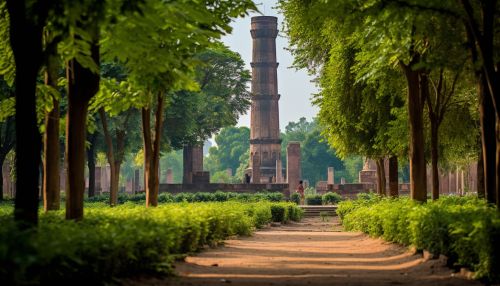Delhi
History
Delhi, the capital city of India, has a rich and layered history that spans over a millennium. The city's history is a tapestry of diverse cultures, religions, and empires, each leaving their indelible mark on its landscape. The city has been a seat of power for various dynasties and empires, including the Delhi Sultanate, the Mughal Empire, and the British Raj.
The earliest architectural relics in Delhi date back to the Maurya Empire in 300 BCE. The city was then known as Indraprastha and was believed to be the capital of the Pandavas in the Indian epic Mahabharata. The Mauryan Emperor Ashoka erected a pillar in Delhi, which is now known as the Ashoka Pillar.


Geography
Delhi is located in Northern India, bordered by the states of Haryana and Uttar Pradesh. The city is spread over an area of approximately 1,484 square kilometers and lies at an average elevation of 200 to 250 meters above sea level. The Yamuna River, one of the most sacred rivers in Hinduism, flows through the eastern part of the city.
The city's geography is diverse, with the western and southern parts being relatively hilly due to the presence of the Aravalli Range. The eastern part of the city is more flat and is characterized by fertile alluvial soil, making it suitable for agriculture.
Climate
Delhi experiences a monsoon-influenced humid subtropical climate, characterized by high variations between summer and winter temperatures. The summer season, from April to June, is extremely hot with temperatures often exceeding 40 degrees Celsius. The monsoon season follows the summer, from July to September, bringing heavy rainfall and a drop in temperature.
The winter season, from November to February, is marked by a significant drop in temperature, with the lowest temperatures often dropping to around 7 degrees Celsius. The city often experiences dense fog during the winter, reducing visibility significantly.
Demographics
As of the 2011 census, Delhi had a population of over 11 million, making it the second most populous city in India after Mumbai. The city has a diverse population, with people from different parts of India and the world calling it home. The official language of Delhi is Hindi, but a significant number of people also speak Punjabi and Urdu.
The city has a high literacy rate, with over 86% of the population being literate. The male literacy rate is higher than the female literacy rate, reflecting the gender disparity in education in India.
Economy
Delhi has one of the fastest-growing economies in India, with a growth rate of 8.1% in 2016-17. The city's economy is diverse, with sectors such as information technology, telecommunications, hotels, banking, media, and tourism contributing significantly to its GDP.
The city is a major hub for the IT and ITeS sector, with many multinational companies having their headquarters in the city. The city is also a major retail market, with several high-end shopping malls and markets.
Culture
Delhi's culture is a blend of traditional and modern influences. The city is known for its rich history, diverse cuisine, vibrant arts scene, and lively festivals. Delhi's cuisine is influenced by the various cultures that have inhabited the city over the centuries, including Mughlai, Punjabi, and South Indian cuisines.
The city is also known for its music and dance traditions, with various cultural festivals and events held throughout the year. These include the Delhi International Arts Festival, the Qutub Festival, and the Delhi Literature Festival.
